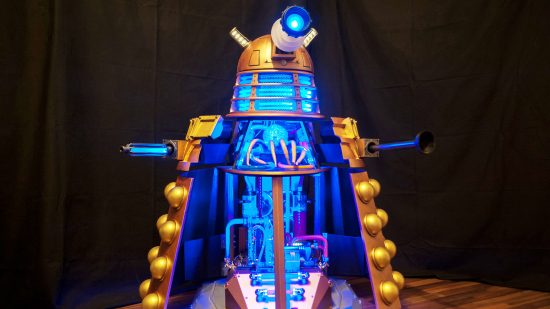Worship this Dalek PC, or you will be exterminated! Whether you’re a Doctor Who fan or not, this Dalek rig is an amazing piece of craftsmanship. Not only is it a water-cooled gaming PC in a Dalek, obviously, but the whole robot was built from scratch, and it features a voice box and motion sensor, so it can react to movement. Open it up, and you’ll even see the actual Dalek that controls the robot shell.
Thanks to our rapidly growing PC building Facebook page, we’ve seen many custom gaming PCs, from mods based on existing case designs to scratch PC builds. You can even submit yours for consideration right here. Here I chat to PC modder Stefan Ulrich (also known as Random Design) about how this Doctor Who PC build was created.
“I am a big fan of the series Doctor Who, and I always had the idea to convert something out of this universe into a case mod,” Stefan tells me. “Back in 2016, my wife and I participated in the 24-hour live modding challenge at the International German Case Mod Championships at Gamescom in Cologne.
“We chose a TARDIS for that competition but already felt the urge to go bigger and build another iconic piece out of that franchise. The same year, I participated in the Thermaltake Case Mod Invitational. I took that as an opportunity to realize my second idea for a Doctor Who-themed case mod, the Dalek.”

An enormous amount of work went into this PC’s construction – the Dalek itself was built from scratch. How do you get started on a project as involved as making a Dalek yourself? “I started by making a 3D [CAD] model,” says Stefan. “This helped me to get a better feeling for the overall proportion and shape of the Dalek. As a reference, I used multiple pictures of real Daleks from the Doctor Who series.”
This approach also enabled Stefan to try out models of the PC hardware in the virtual build, to make sure it would fit. “I just needed to make small adjustments,” he says, such as “adding holes for the cable management and water cooling. It was important to simulate the routes of cables and pipes at the start, so they wouldn’t be an issue later on in the process.”
Once the 3D model was sorted, Stefan’s next job was to take all the measurements and make a sketch of the model on paper. “I used these measurements for most parts of the construction,” he tells me.
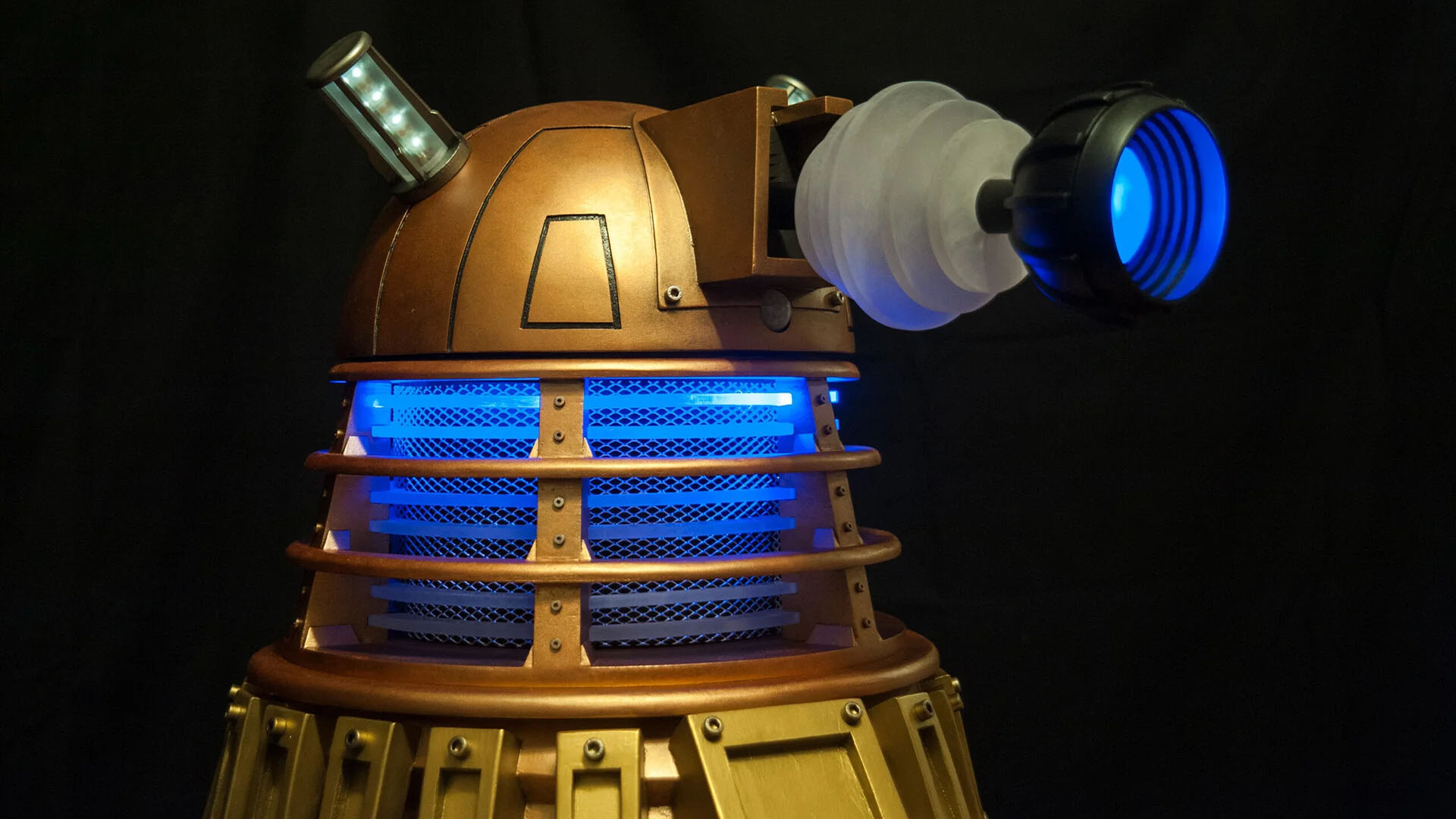
The foundation of the Dalek PC is a plywood base, which Stefan cut, shaped, and sanded by hand, using a jigsaw and drawing on the wood – the pieces are all stuck together with glue, and then spray painted. Meanwhile, a series of LED strips around the inner edge of the base make the Dalek look as though it’s hovering.
Then there’s the main section, made from two doors that open up so you can see the innards. This is also made from plywood and features the golden baubles that are so familiar when you look at a Dalek. These have two components – the rings, which are 3D-printed, and the hemispheres, which are made with molded expanding foam.
“To match the design of the original Dalek,” says Stefan, “the outside was colored in a bronze tone with golden details. The paint was dapped on by hand, in order to make it look a little uneven and not perfect. This gives the entire outside a little bit of a worn look.”
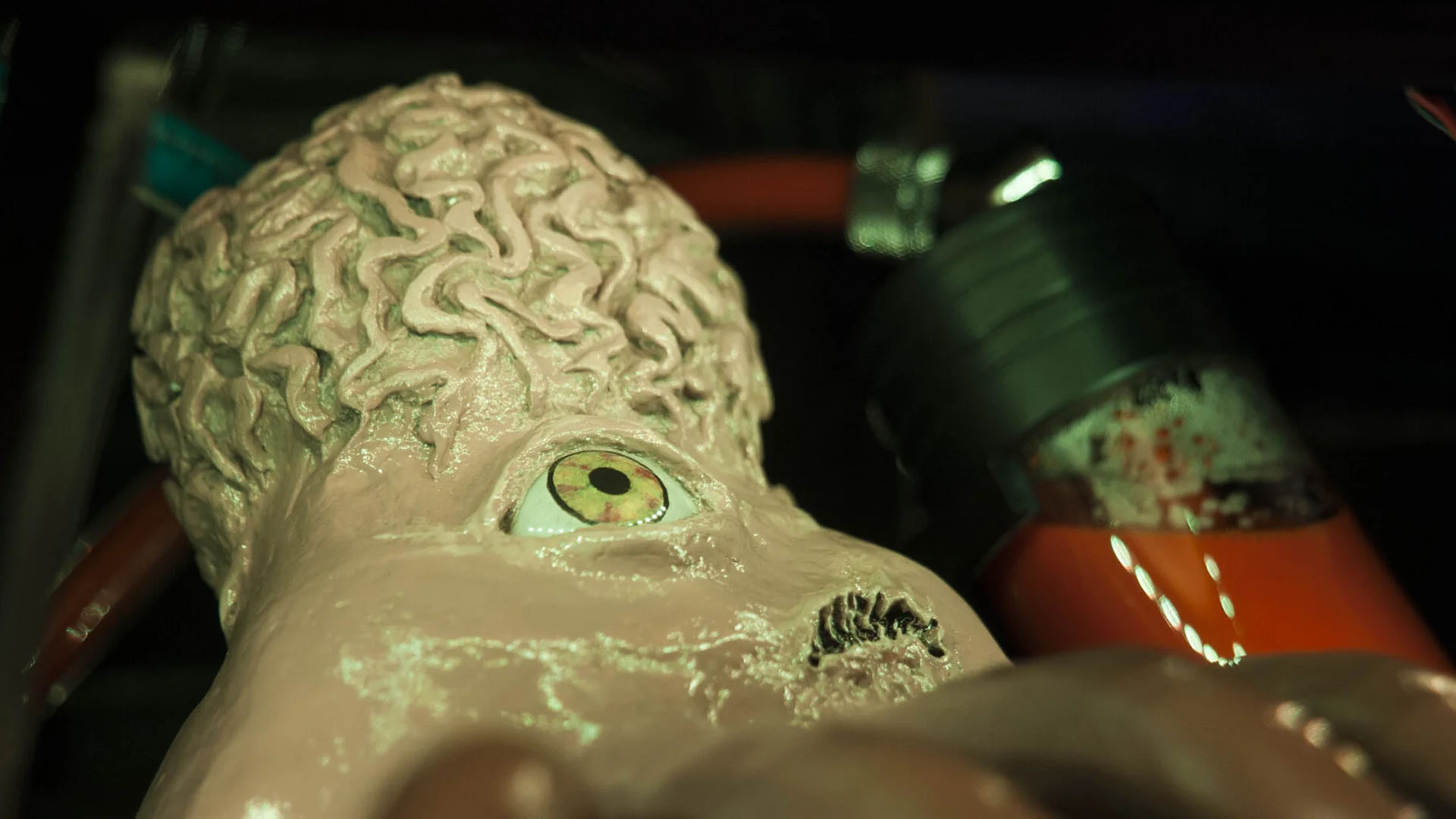
The section above this is a bit different. “This can also be opened,” says Stefan, “to reveal a look at the Dalek itself, and two of the water tanks for the cooling system. This part was made with a different technique. I carved out the shape from Styrofoam and covered it with fiberglass and body filler. The same was also done for the dome on top. The remaining Styrofoam was later dissolved with acetone.”
Meanwhile, the Dalek creature itself is made from newspaper and wire, and then covered with papier mâché. “It was colored by simply using acrylic paints and a brush,” explains Stefan.
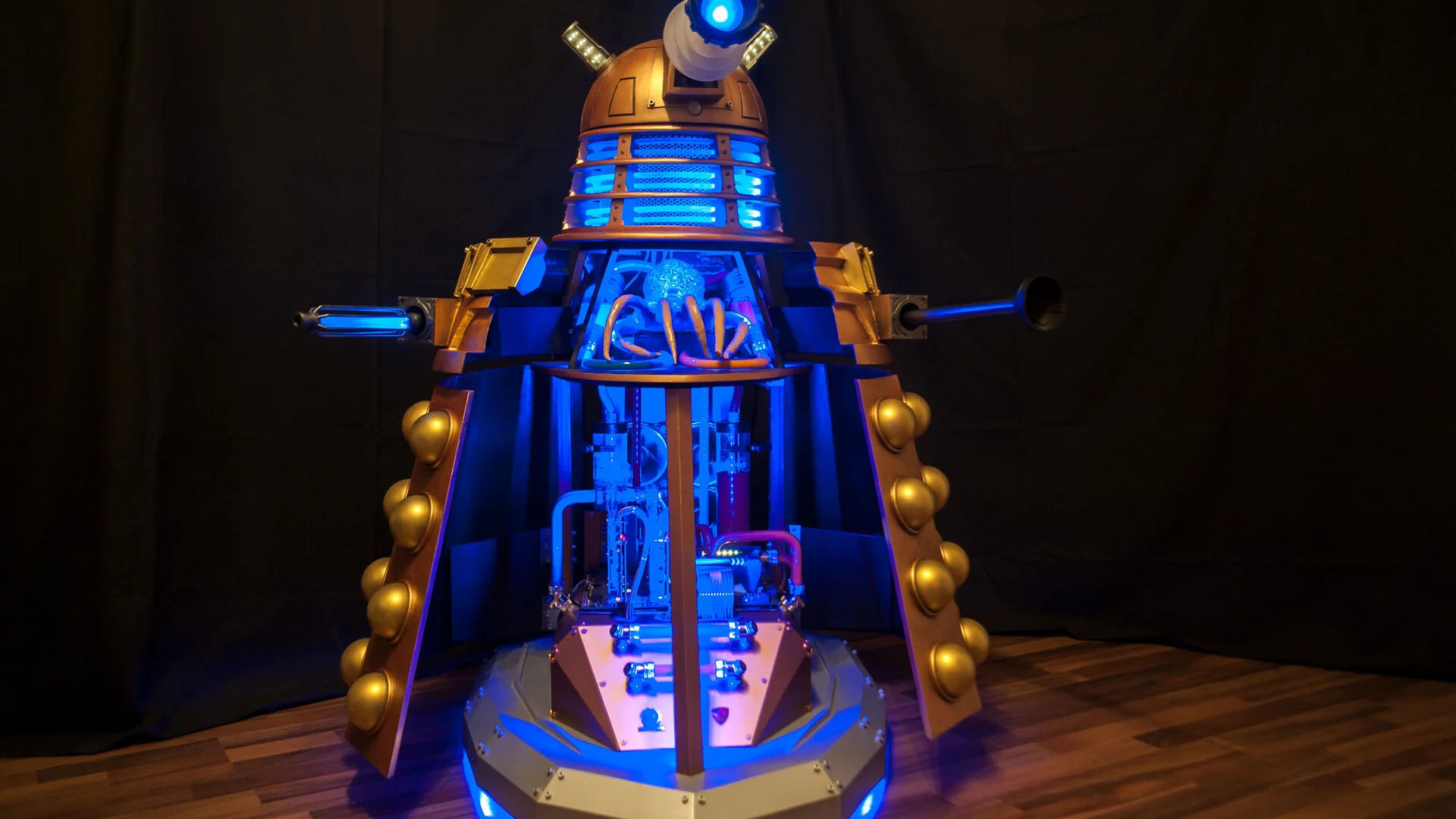
Amazingly, this Dalek PC is also interactive. Its lights and movements respond to motion and speech, and it can talk as well. A large part of the spectacle is undoubtedly the lighting. “In addition to the light effect on the bottom, I included more lights, including ones in the weapon arm, the neck part, the eye, and the two lights on the dome,” Stefan tells me.
“For the two light effects on the dome, I added a special little detail. The light flashes and is triggered by voice commands. When the Dalek is hooked up to a sound system, he will speak typical lines from the series, while the lights flash in the same rhythm.” The movements look authentic as well.
“As another electronic detail, I made the two arms movable with servo motors,’ Stefan explains. “In addition, the entire head can rotate, and the eye moves up and down. I built a small controller box, which is connected to the Dalek via a cable, to control all those movements.” It’s well worth watching the video below, where Stefan demonstrates the Dalek’s lights and movements.

The PC itself is overshadowed by the amount of work that’s gone into its surroundings, but it’s also worth taking a look at the interior of the Dalek, and how it accommodates two water-cooling loops.
“The purpose of the inside was mainly to hold the hardware and water-cooling gear,” explains Stefan. “To match the outside design, I covered the construction that holds the motherboard with a bronze-colored vinyl foil. The acrylic pipes for the water-cooling system underline the mechanical aspect and look of the inside, while the blue and rusty colors of the water-cooling fluid further highlight the inside.”
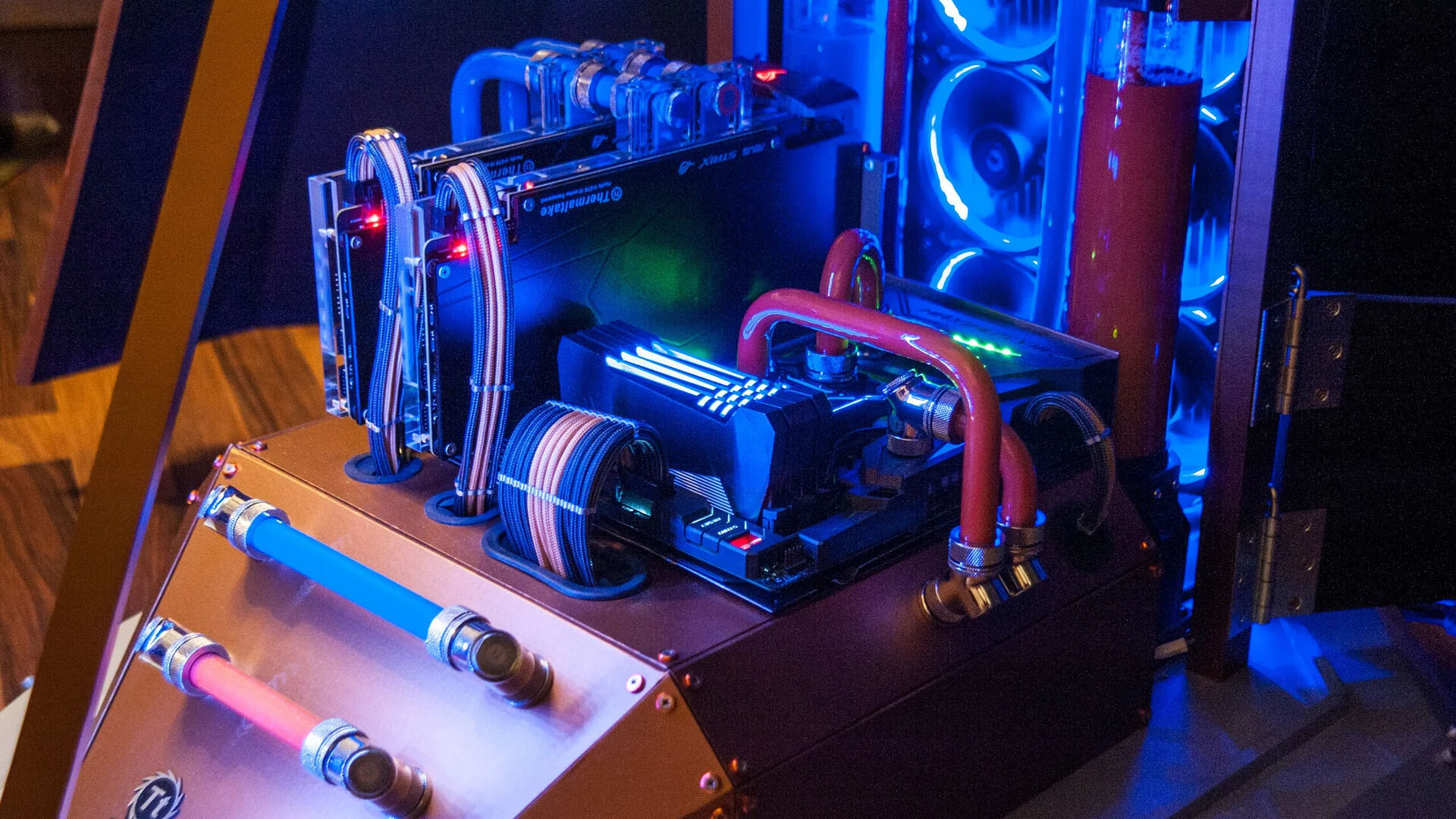
Remarkably, most of the work on the Dalek was achieved with hand tools. “At this point in time, I only had a very small workshop and limited tools,” explains Stefan. “Everything was achieved by just using simple tools, such as a small rotary saw, a jigsaw, a Dremel, and a belt sander. I only started getting into 3D printing that year, so only a few details, such as the eye, weapon arms, and light effects on the dome, are 3D printed.”
Is Stefan happy with the end result? “Looking at the Dalek today, I’m still satisfied with the result, and what I could achieve with the given tools and material in a short amount of time,” he says. “That’s why the Dalek still has a place in my showroom among other case mods that I have built over the years.”
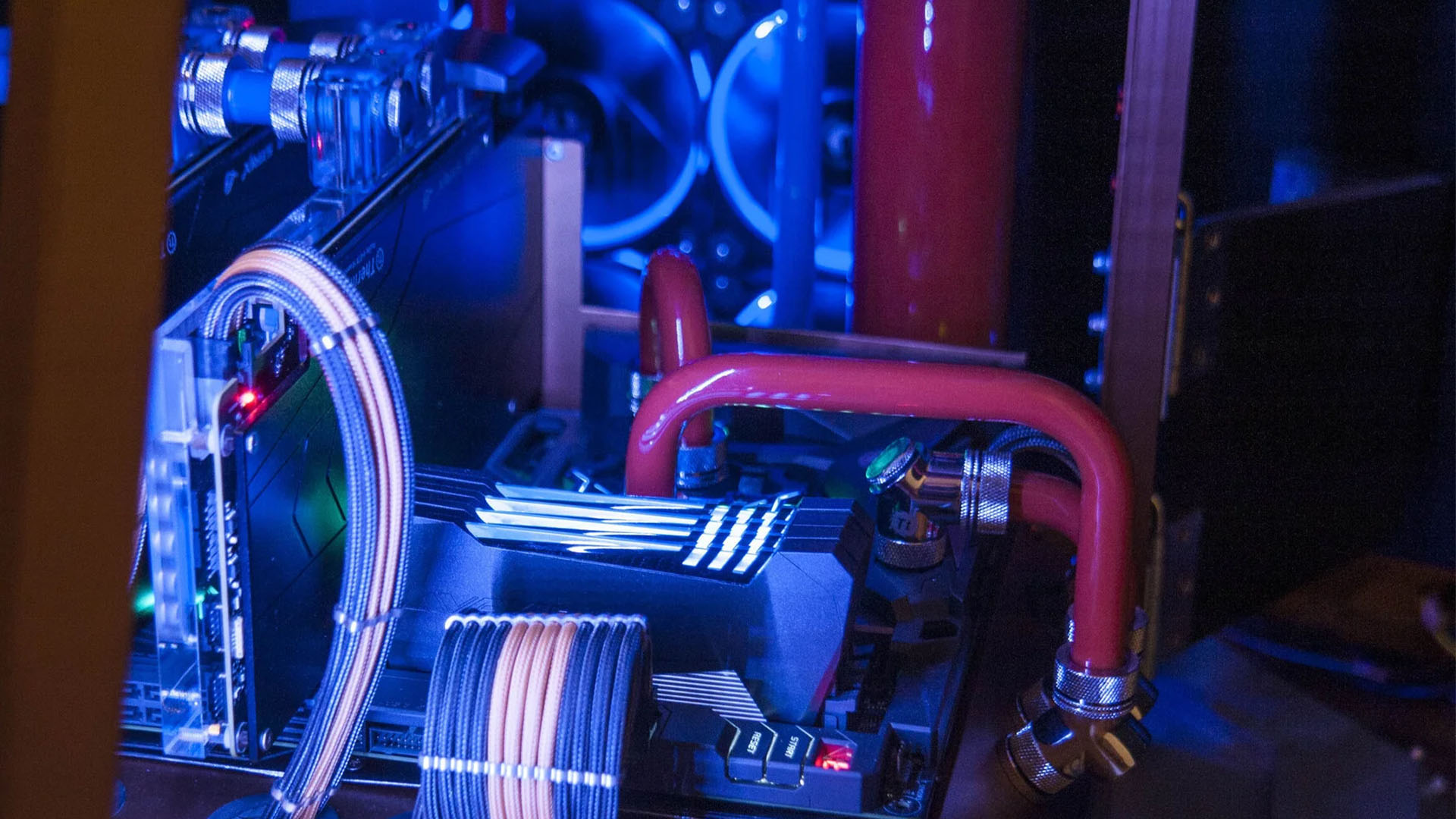
Would he do anything differently now? “The short answer is yes, definitely,” says Stefan, “but only small things.” He says he’d change the cable management system to make it more cooperative when you want to change a component, as one example.
“Small parts that were made from wood would also have been 3D printed today,” he adds, “just to raise the level of detail and make it look more professional. The paint job would mostly stay the same – I just would have added one or two layers of weathering to really make the Dalek look like it has already traveled through the universe to find the Doctor.”
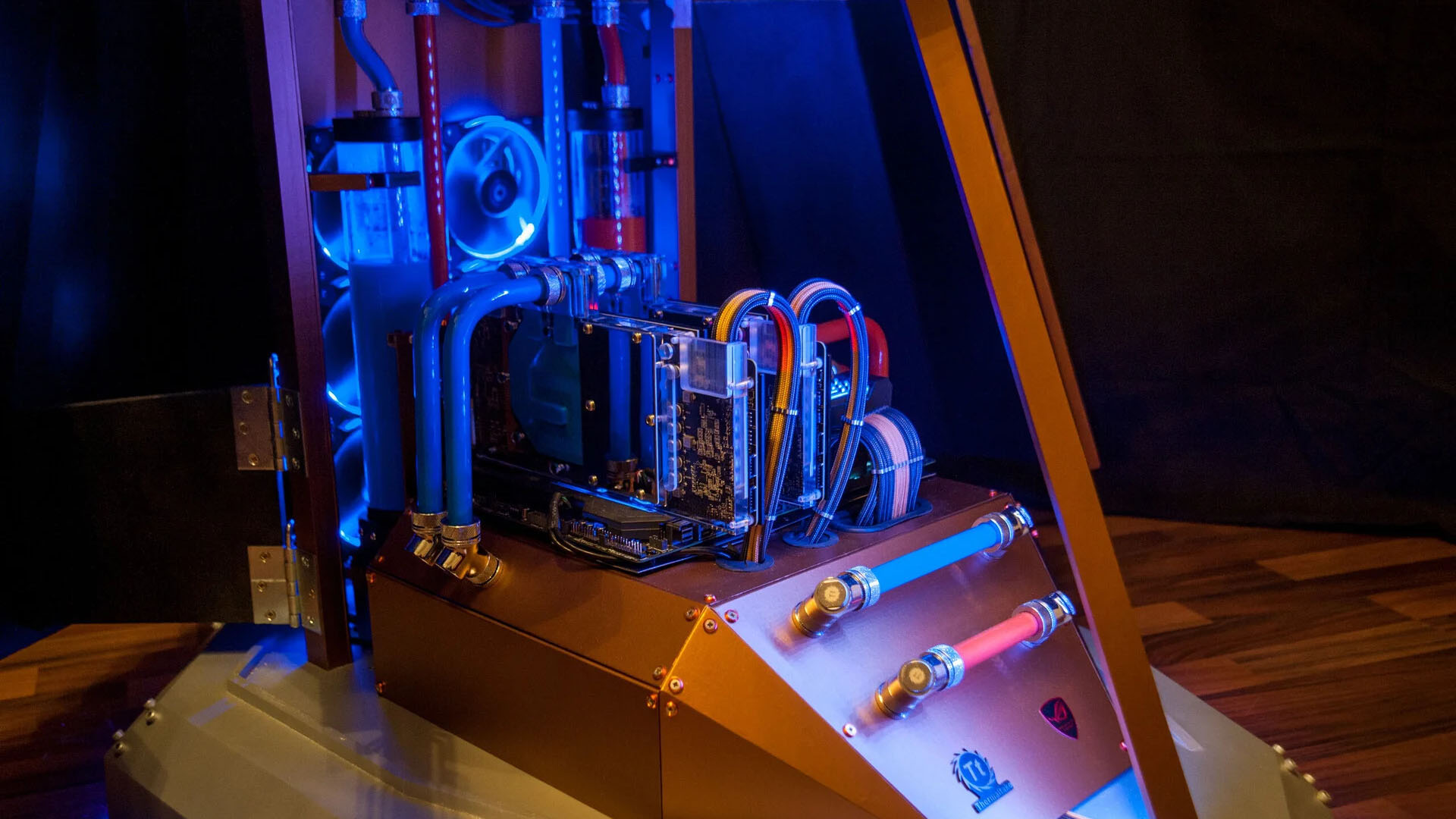
Dalek Dev PC specs
- CPU: Intel Core i7-6700K
- Motherboard: Asus ROG Maximus VIII Formula
- Memory: Avexir Raiden DDR4
- Graphics card: 2 x Asus ROG Strix Nvidia GeForce GTX 1070
- Storage: 120GB V-Color VLM100RGB SSD
- PSU: 750W Thermaltake Toughpower DPS
This is an outstanding build Stefan, I’m amazed at your handiwork. It’s one thing to make a PC in an existing model, but to build a whole Dalek from scratch, and make its lights, weapons, and head interact with you is amazing. I’ll be keeping an eye on your other mods in the future too!
This post originally appeared on Custom PC, which has been covering amazing setups for over 20 years and is now part of PCGamesN. Join our nearly 500k member Facebook group to discuss this build.
If you consider yourself to be an expert PC builder, you can submit your own custom PC build to us today for a chance of being featured on PCGamesN in the future.
